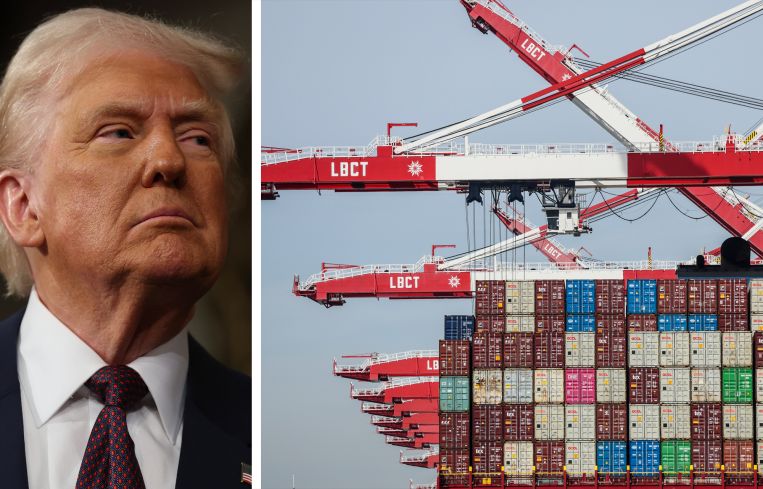L.A. County Industrial Market Stabilizing, But All Eyes on Volatile Trade Policy
Vacancy rates, leasing volume and development construction in Q1 2025 are adjusting to lower demand, but lower international trade could have major implications for market outlook
By Nick Trombola April 9, 2025 4:30 pm
reprints
Despite ongoing economic uncertainty — and trade tariff ups and down — Los Angeles County’s industrial outlook is stabilizing as the market adjusts to easing demand.
Industrial vacancy in L.A. County improved in the first quarter of 2025, albeit slightly, for the first time since early 2023, according to a new report by NAI Capital. Vacancy in the county now rests at 5.8 percent, a reduction of 10 basis points quarter-over-quarter, but still 110 basis points higher year-over-year.
Rent growth has tumbled alongside demand. Asking rates are only 1.4 percent higher than the previous quarter but are down by 10.3 percent year-over-year.
Sales dollar volume has also been hit hard by elevated interest rates and other economic realities. Even though the amount of square footage that traded hands in early 2025 rose by a solid 41.1 percent compared to the end of 2024, dollar volume in the county plummeted 33.2 percent within the same period, and 57.1 percent year-over-year.
“In today’s interest rate environment, yield is driving every decision,” Chris Jackson, CEO of NAI Capital, said in a statement. “The industrial assets that are trading are those offering a 6 to 6.5 percent return.
“Owner-user activity has slowed — it’s currently more cost-effective to lease than to buy. Still, we’re seeing steady demand for Class A product and well-located, multi-tenant small bay properties. Development has largely paused, and on the sales side activity is limited. Most sellers are either facing capital needs or upcoming loan maturities. Private investors continue to be the most active sellers, and in some cases REITs are listing properties they’ve struggled to lease.”
Leasing volume in the county declined by nearly 15 percent compared to the final period of 2024, and was about half a percentage point better than the beginning of last year, with 10.1 million square feet, enough to generate over 1.6 million square feet of positive absorption. Aerospace engineering and manufacturing firm Trio Manufacturing, for example, tripled its space in L.A. County’s South Bay region in March, from about 40,000 square feet to more than 123,000 square feet.
The trend of companies ditching excess space is also normalizing, per NAI Capital. While still slightly higher than early 2024, sublease availability in L.A. County dropped by 11.4 percent quarter-over-quarter to about 11.2 million square feet.
The amount of completed developments, meanwhile, has dropped off significantly. The first quarter of 2025 produced 33 percent less new space compared to the end of 2024, per NAI Capital, while the amount of projects currently under construction dropped by 7.5 percent within the same period.
As President Donald Trump’s various trade wars and tariff standoffs rage on, particularly with China, all eyes are on cargo volume — a major driver of demand for warehouse space in Southern California, per NAI Capital.
Twenty-foot equivalent (TEU) cargo volume was down by 8 percent year-to-date in the Ports of L.A. and Long Beach, according to the ports’ latest figures from February. Because activity in both ports accounts for roughly 31 percent of all international container shipments across the entire U.S., a sustained dropoff in volume, due to economic policy, could have major effects on L.A. County’s industrial market going forward.
“Ongoing regulatory uncertainty, geopolitical tensions, and tariff negotiations with China and Hong Kong — our largest trading partner — may lead some users to adopt a wait-and-see approach, potentially slowing near-term deal activity,” the report said.
Nick Trombola can be reached at ntrombola@commercialobserver.com.


